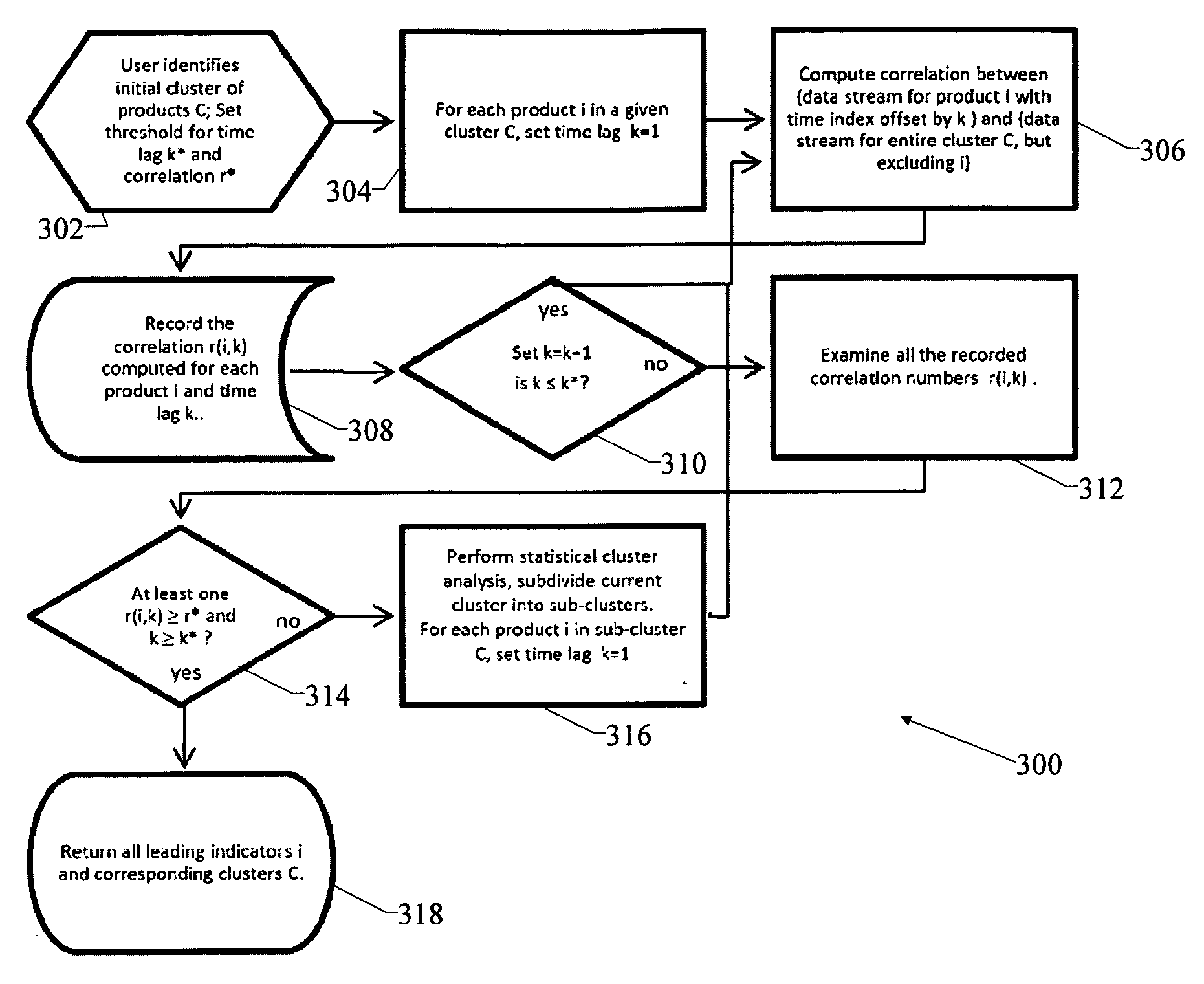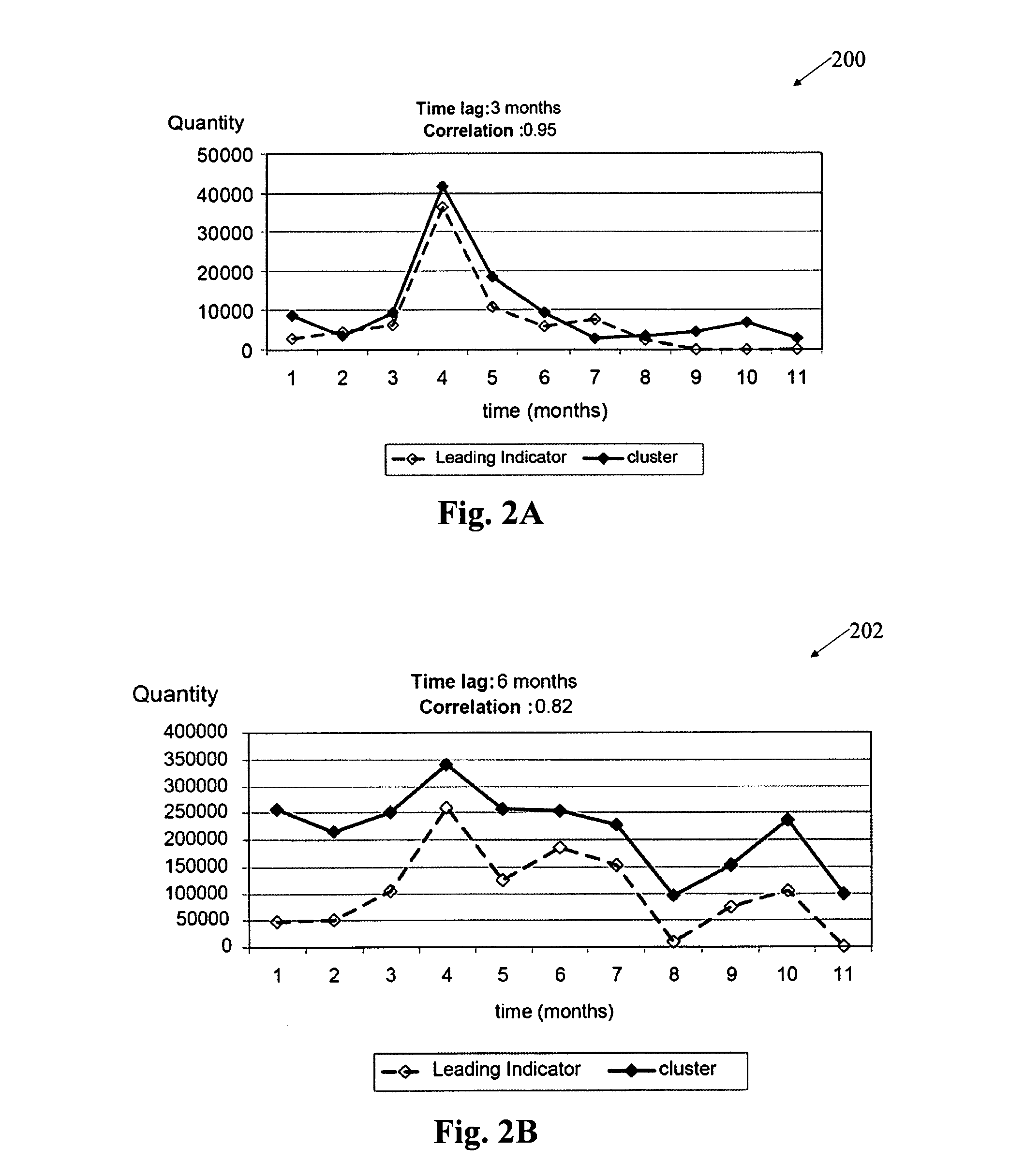Prediction method and system
- Summary
- Abstract
- Description
- Claims
- Application Information
AI Technical Summary
Benefits of technology
Problems solved by technology
Method used
Image
Examples
examples
[0049]The leading indicator engine analyzes the data associated with a specified group of products, systematically searches for a set of leading indicator products for the group and generates demand forecasts based on the leading indicator identified. The tool also can be used in a scenario analysis mode to test whether a particular product is a strong leading indicator for some group of products, which is a question of great managerial interest. In this section, we provide several examples to illustrate different aspects of the leading indicator analysis. Our experiments were conducted using monthly demand data that covered the 26-month period from December 2001 to January 2004. The data set included 3,500 semiconductor (IC) products across eight business entities. For testing purposes, we used an estimation-validation procedure as follows. We designate, for example, the first 15 months in the data set as the estimation period (EP), which represents the historical demand data visib...
PUM
 Login to View More
Login to View More Abstract
Description
Claims
Application Information
 Login to View More
Login to View More - R&D
- Intellectual Property
- Life Sciences
- Materials
- Tech Scout
- Unparalleled Data Quality
- Higher Quality Content
- 60% Fewer Hallucinations
Browse by: Latest US Patents, China's latest patents, Technical Efficacy Thesaurus, Application Domain, Technology Topic, Popular Technical Reports.
© 2025 PatSnap. All rights reserved.Legal|Privacy policy|Modern Slavery Act Transparency Statement|Sitemap|About US| Contact US: help@patsnap.com



